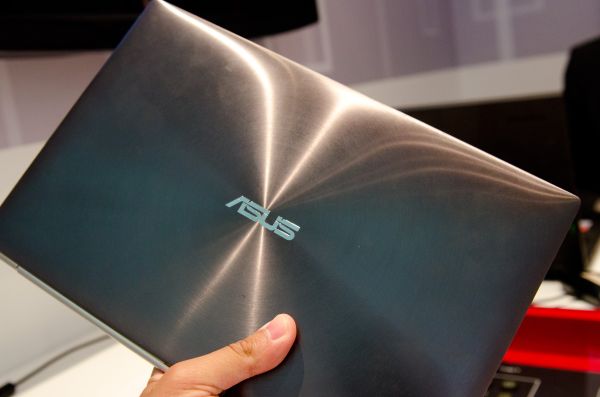Computex 2011: Up Close with ASUS UX Series with SanDisk's U100 SSD
by Anand Lal Shimpi on May 31, 2011 7:14 AM ESTI met with SanDisk earlier today and to my surprise they had an ASUS UX Ultrabook in their meeting room. It turns out that at least one model in the UX Series will use SanDisk's brand new U100 SSD.
The U100 is SanDisk's first 6Gbps drive based on SanDisk's own controller. SanDisk's architecture is a little different than what we're used to. They claim to be doing some SandForce-like data reduction but they wouldn't give me any details on what they're actually doing. The controller doesn't have any DRAM to augment it, which lends credibility to some SF-like technology at work here. SanDisk wrote us to clarify that its U100 drive doesn't require any DRAM, which is the only similarity to SandForce that exists. There is no real-time compression or data deduplication enabled on the drive.
SanDisk also uses a hybrid SLC/MLC setup where a small percentage of each MLC NAND die is actually configured as SLC NAND to act as a read/write cache in front of the rest of the die. This results in better random write performance and reliability.
The U100 in ASUS' UX Series notebook is a mSATA drive in a MacBook Air-like thin gumstick form factor. SanDisk is promising idle power usage of only 10mW, although peak load is 4W.
Maximum sequential read speed is listed at 450MB/s, with 340MB/s writes. Random performance isn't that good, SanDisk quotes a burst speed of only 2300 IOPS. That's still a lot better than a hard drive but definitely not as good as what we're used to from high end SSDs. Keep in mind that the UX Series is more like a MacBook Air than a traditional notebook, and these are much better performance specs than what Apple currently ships in the MBA.

















13 Comments
View All Comments
gevorg - Tuesday, May 31, 2011 - link
Will Asus be able to beat MBA's $999 price for entry-level model that comes with 64GB SSD? And there is a MBA refresh coming up soon too.GullLars - Tuesday, May 31, 2011 - link
I noticed it's rated for 4W peak, but as SSDs really don't run at even 10% load on average in any user application, i don't see this as a problem. If the peak power allows high peak performance, it can be justified by the same logic as various "turbo" and "burst" technologies.If it's lazy design giving high power for anything other than "sleep" (long idle), this could lead to another Apex/Titan like drive, heating up the bottom of laptops.
Goi - Wednesday, June 1, 2011 - link
I reported this in your original UX coverage :)